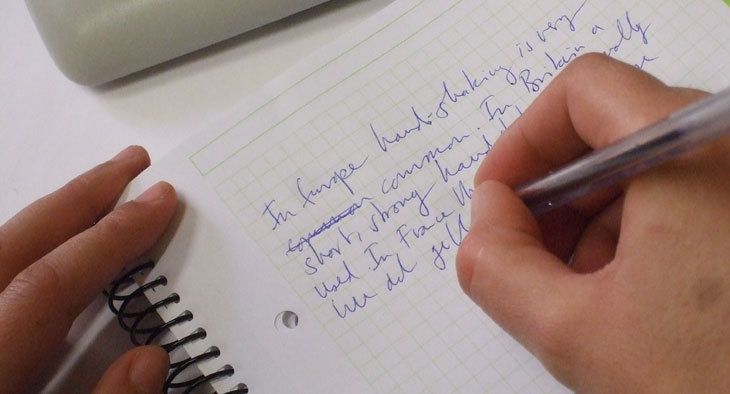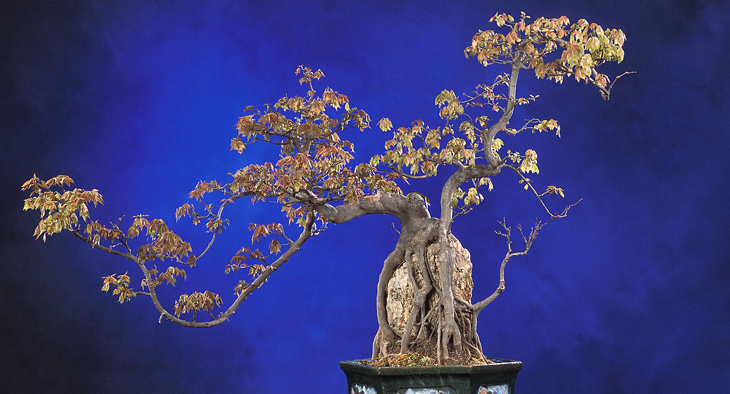A: Study how to approach multiple choice tasks

In this group of exercises you will do further practice of multiple choice tasks.
1. Matching specific information to the correct paragraph.

The reading passage below has eight paragraphs (A-H). Which paragraphs include the information below?
- An adventure sport which began in France
- Younger people are becoming more and more attracted to extreme sports
- Two reasons why extreme sports are becoming more popular
- Differences in levels of adrenaline in different species
- Adrenaline levels are different in different people
- A possible answer as to why extreme sports are so popular
- Why we need adrenaline
- Legal protection for people participating in extreme sports
Adrenaline Addicts |
|
A B C D E F G H From The Scotsman |
2. Multiple choice tasks.
Step 1: Read the question.
The first step with a multiple choice task is to read the question carefully (before looking at the text). So now read the example multiple choice task below:
|
Choose the appropriate letter (A-D) for each of the questions. |
||
| 1. | A new scientific theory argues that _____________. | |
| A. | adrenaline prepares us to respond quickly to events | |
| B. | the production of adrenaline is connected with the chemical potassium | |
| C. | the speed at which adrenaline is released varies | |
| D. | much more research is needed into the production of adrenaline | |
| 2. | David McCobb argues that _____________. | |
| A. | adrenaline release in humans is connected with personality | |
| B. | adrenaline encourages people to take more risks | |
| C. | adrenaline helps us to stay within safe limits | |
| D. | adrenaline is addictive | |
| 3. | The growth of interest in extreme sports _____________. | |
| A. | is because people are less concerned about suffering accident or injury | |
| B. | has occurred for a number of reasons | |
| C. | has occurred to meet the demand for increasingly dangerous activities | |
| D. | is because extreme sports are now much safer | |
| 4. | As a result of recent accidents, canyoning _____________. | |
| A. | has decreased in popularity in France | |
| B. | will take place only in restricted areas of France | |
| C. | is no longer offered by many French companies | |
| D. | will be made safer | |
| 5. | The Extreme Sports Channel on television _____________. | |
| A. | has led to an increase in popularity of extreme sports among younger people | |
| B. | advertises a wide range of clothing that is popular among young people | |
| C. | is a consequence of the increasing popularity of extreme sports | |
| D. | is going to be launched across Europe | |
Step 2: Locate the relevant section of the text.
Look again at question 1 and locate the relevant section of the
text.
See the text again.
| 1. | A new scientific theory argues that _____________. | |
| A. | adrenaline prepares us to respond quickly to events | |
| B. | the production of adrenaline is connected with the chemical potassium | |
| C. | the speed at which adrenaline is released varies | |
| D. | much more research is need into the production of adrenaline | |
Reading the first part of the question will tell you which paragraph of the text you need to look at.
Step 3: You now need to read the paragraph in detail.
Remember!
- There is only one correct answer. The other three answers (called 'distractors') may include information that is also included in the paragraph but that doesn't complete the sentence correctly.
- The distractors can also be information that is known to be true but that isn't included in the text.
- Sometimes distractors include similar vocabulary to the vocabulary found in the original text, so don't choose an option for this reason alone.
- The correct option will express information included in the paragraph in different words. Or it can be a summary of information included in the complete paragraph.
3. Read the paragraph carefully.
Now read paragraph B and try to answer question 1. See the text again.
B: Look at sentence matching tasks

In this group of exercises you will practise matching two halves of sentences.
TIP:
We have already seen two different matching tasks in previous units:
- Matching headings to paragraphs (Unit 2)
- Matching ideas and opinions to specific people (Unit 3)
In this group of exercises you will look at a third type of matching task where you match two parts to complete a sentence.
1. A further matching task.
Here is the third matching task. Read the example task in the box, and the advice below it, and then you will be able to complete the exercise that follows.
Complete the sentences below from the choices available (A-G). The first one has been done for you as an example.
Note: You do not need to use all of the choices (A-G) available.
- The body releases adrenaline...
- The requirements of different species means that...
- While people love the sensation that the release of adrenaline produces,...
- Special insurance policies...
- Extreme sports are no longer...
- ...as dangerous as they used to be.
- ...they do not want to expose themselves to unnecessary risks.
- ...are available to people who supervise extreme sports.
- ...just for adults with money to spare.
- ...do not cover all situations in which extreme sports are undertaken.
- ...when there is a sudden need to act quickly.
- ...the potassium channels operate differently in different mammals.
TIP:
How to answer this type of question.
As usual, first read the complete question. The beginnings of the sentences (1-5) tell you where to look in the text in order to match the sentences correctly. Remember that the beginnings of the sentences are in the same order as the information in the text.
Look again at the first halves of the sentences. Choose the paragraph that talks about each topic. The first one has been done as an example. See the complete text again.
2. Practice.
Now answer questions 2-5.
TIP:
Remember!
Make sure the answers fit grammatically as well as in terms of the content of the text.
C: Focus on True/False/Not given tasks

In this group of exercises you will practise True/False/Not given tasks.
TIP:
To complete this type of task you need to do the following:
- Read the title and any subtitles, and then quickly read the text to find out what it is about.
- Read the statements and underline key words in them that tell you what information you are looking for.
- Look for the part of the text that contains the ideas or information mentioned in the statement. Read this part of the text very carefully.
- Decide if the statement is true or false, or if the information or idea is mentioned in the text, or not.
1. Summary completion.

You are going to read a text about the art of bonsai. Before you read the text, read this summary below.
Now quickly scan the text. Put the numbers and figures in the gaps to complete the summary. There are two options you do not need to use.
2. True/False/Not given tasks.
Read the example task in the box below.
The wording used in the question can be either:
True/False/Not given OR Yes/No/Not given
But the approach to answering the question (see 'Tips' below) is the same in each case.
Do the following statements agree with the information in the text on bonsai?
Write:
TRUE if the statement agrees with the information
FALSE if the statement contradicts the information
NOT GIVEN if there is no information on this in the passage
Example
0. A bonsai is a tree which is planted and grown in a pot. FALSE
- To create the desired effect, some branches of the tree are removed.
- Full-size trees often don't live as long as a bonsai of the same species.
- The popularity of bonsai in Japan led to many other expressions of Chinese culture appearing in Japan.
- Sometimes, two or more bonsai can be planted in the same pot to create a particular effect.
- By the middle of the 19th century, bonsai were popular among a wide range of social classes in Japan.
Now read the advice on how to answer this type of question.
TIP:
- First read each statement and find the section of the text which talks about the same topic.
- Next look carefully at the relevant section to see if the statement matches information included there.
- If you are confident that the statement exactly matches information in the text, answer YES or TRUE.
- If the information in the text says the opposite to the statement, answer NO or FALSE.
- Answer NOT GIVEN if the text doesn't include the information - even if you think or know that this information is probably true.
3. Scanning the text for general meaning.
TIP:
To complete a True/False/Not given task it is important to first quickly read the text to get a general idea of what it is about and how it is structured.
Quickly read the text and select the paragraph that covers each topic.
4. Reading the question carefully.
TIP:
Now that you have a general idea of what the text is about you need to read the question and the six statements carefully.
Highlight the key words in each of the six statements.
Now compare your answers with our suggested answers.
- To create the desired effect, some branches of the tree are removed.
- Full-size trees often don't live as long as a bonsai of the same species.
- The popularity of bonsai in Japan led to many other expressions of Chinese culture appearing in Japan.
- By the middle of the 19th century, bonsai were popular among a wide range of social classes in Japan.
- Sometimes, two or more bonsai can be planted in the same pot to create a particular effect.
- Bonsai trees must be watered every two days, regardless of the weather.
5. Reading in detail.
See the text again.
Now find the information in the text and complete the task.
Question:
Do the following statements agree with the information in the
text on bonsai?
Select:
| TRUE | if the statement agrees with the information |
| FALSE | if the statement contradicts the information |
| NOT GIVEN | if there is no information on this in the passage |